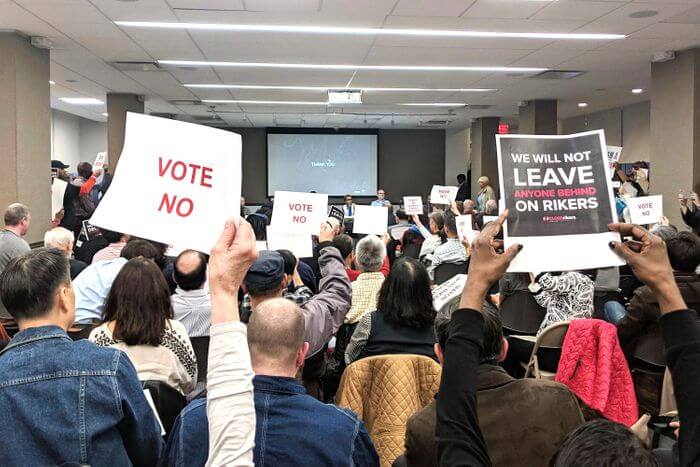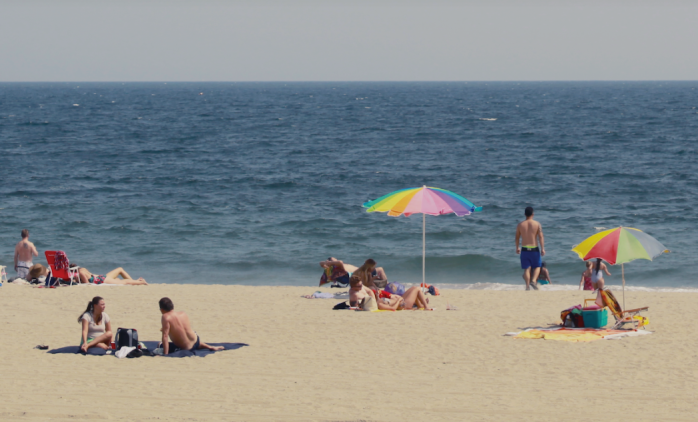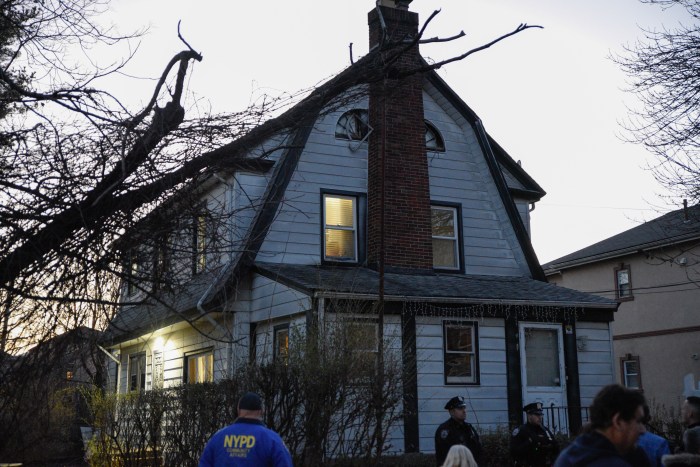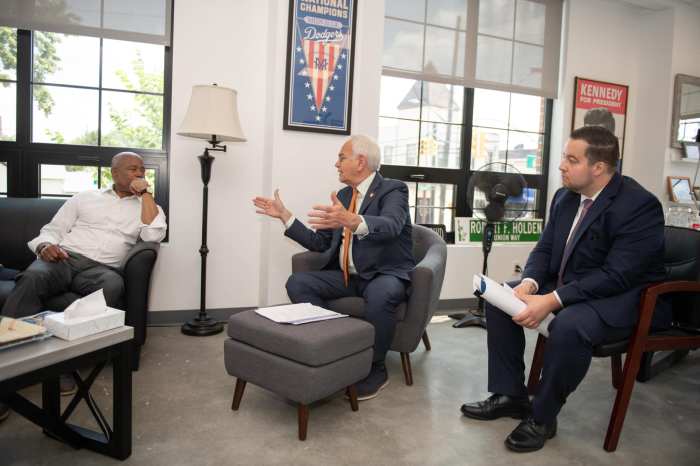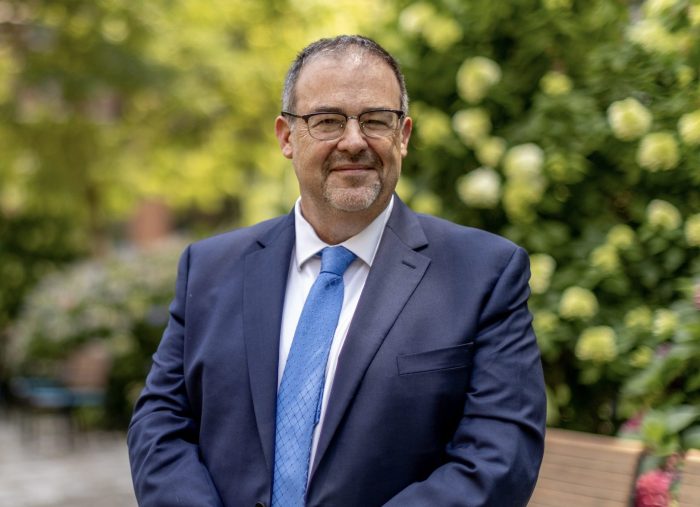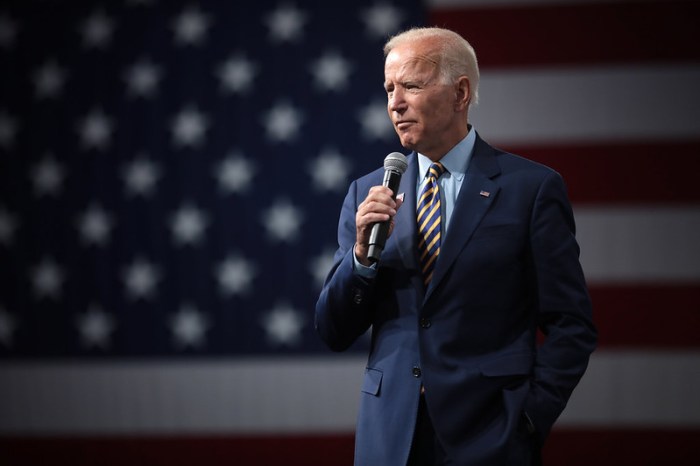By , , and THE CITY

This story was originally published on April 12, 2019 by THE CITY.
As a $10 billion plan to build four new jails across the city forges ahead, many residents and activists charge they’ve been locked out of the discussion for months.
“They’re saying, ‘Oh there are so many opportunities for community engagement,’” said Nancy Kong, a Manhattan community activist. “No, you guys already made the decision. You already put that stupid cake in the oven. We’re just going through formalities right now.”
Eight months after Mayor Bill de Blasio announced the city’s plan to move inmates out of the notorious Rikers Island and into smaller jails in The Bronx, Brooklyn, Queens and Manhattan, the public review process has officially begun.
Over the next several months, community boards in the affected neighborhoods — Mott Haven, Boerum Hill, Kew Gardens and Chinatown — and the borough presidents will give advisory input on the four new jails. Then, the City Planning Commission, City Council and the mayor will give an up-or-down vote.
But ahead of that charter-mandated review process, the de Blasio administration last fall established Neighborhood Advisory Committee (NAC) meetings. Officials pledged the sessions would meaningfully engage the community “in a robust and transparent way.”
Invitation-Only Sessions
The gatherings, however, were invite-only and the lists of attendees were not made public. The minutes were written by the city-hired architecture firm that designed the jail plan. Local reporters, including two from THE CITY, were repeatedly barred from attending sessions.
Then-spokesperson for the Mayor’s Office of Criminal Justice (MOCJ), Patrick Gallahue, said in the winter that the NAC meetings were private, citing “ground rules we established with participants from the beginning.”
Those rules, according to NAC members THE CITY spoke with, made for a contrived process unrepresentative of the communities the new jails will affect.

“It is a useless committee that was basically formed so they can check out the boxes and say we had neighborhood meetings,” said Sylvia Hack, a Queens NAC member. “It’s just garbage.”
That’s a sentiment shared by critics of the jail plan across the city. The anger has spilled into preliminary community board hearings on the plans, some of which have devolved into shouting matches.
Councilmembers in Manhattan, The Bronx and Queens said they coordinated their own outreach over the past several months — but critics say it is not enough.
Councilmember Diana Ayala, whose district includes the proposed site for the new Bronx jail, said in a statement that she’s held 14 meetings with residents on the plan since September. Attendees, she said, “were informed about the Administration’s plan, offered an opportunity to express their concerns and asked to share feedback on future community investments.”
Yet some critics noted that some of Ayala’s meetings were invite-only and not advertised to the larger community.
Hello CB2 ??
I’m at tonight’s Borough-based Jail System public hearing, where MOCJ will present its plan to residents of the community. I’ll be tweeting. pic.twitter.com/UkvMjC3SrG
— ?claudia irizarry aponte (@clauirizarry) April 11, 2019
“It’s an illusion of inclusion and community input, because the decision was already made,” said Arline Parks, who chairs the Land Use Committee of Bronx Community Board 1 and is CEO of Diego Beekman Mutual Housing, a co-op complex near the proposed Bronx jail.
She said she was invited to some of Ayala’s meetings – but declined to attend because she didn’t feel they were productive.
Jan Lee, a third-generation Chinatown resident, said a representative of City Councilmember Margaret Chin called to invite him to a closed-door meeting about the plan ahead of the mayor’s Aug. 15 announcement.
“They said … ‘It’s invite-only. There will be no invitation. You have this one phone call. We will let you know when and where it is,’” he told THE CITY.
Fears of a ‘Done Deal’
Kong, a member of the Manhattan NAC, believes the de Blasio administration and Chin decided the jail plan was “a done deal” many months ago.
Rush Perez, a spokesperson for Chin, said she “has been clear that she supports the closure of Rikers Island.”
“That support has necessitated a conversation about the future of an existing jail in her council district. She will continue to ensure that all voices are heard as part of an open public process,” he said.
Councilmember Karen Koslowitz, whose district includes Kew Gardens, hosted a September community meeting ahead of a town hall on the proposal in the fall, her spokesperson, Michael Cohen, said.
On March 27, Koslowitz and other Queens community leaders — including about 20 Kew Gardens and Briarwood residents — met privately with de Blasio.
Cohen said that opponents were “well represented.”
In a recording provided by opponents of the plan who were in the room, the mayor defended his jails vision.
“We are New Yorkers. That means we know we don’t always agree on everything,” he said. “We are putting forward a plan that I believe is in the long term interest of the city of New York and in asking for communities of the city to be part of the solution we also have a special obligation to those communities.”
Alacia Lauer, a MOCJ spokesperson, said the “public review process is ongoing and there will be more opportunities for public engagement as we move forward.”
The four community boards have until May 25 to provide their advisory opinions on the plan before it heads to the borough presidents.
This story was originally published by THE CITY, an independent, nonprofit news organization dedicated to hard-hitting reporting that serves the people of New York.

